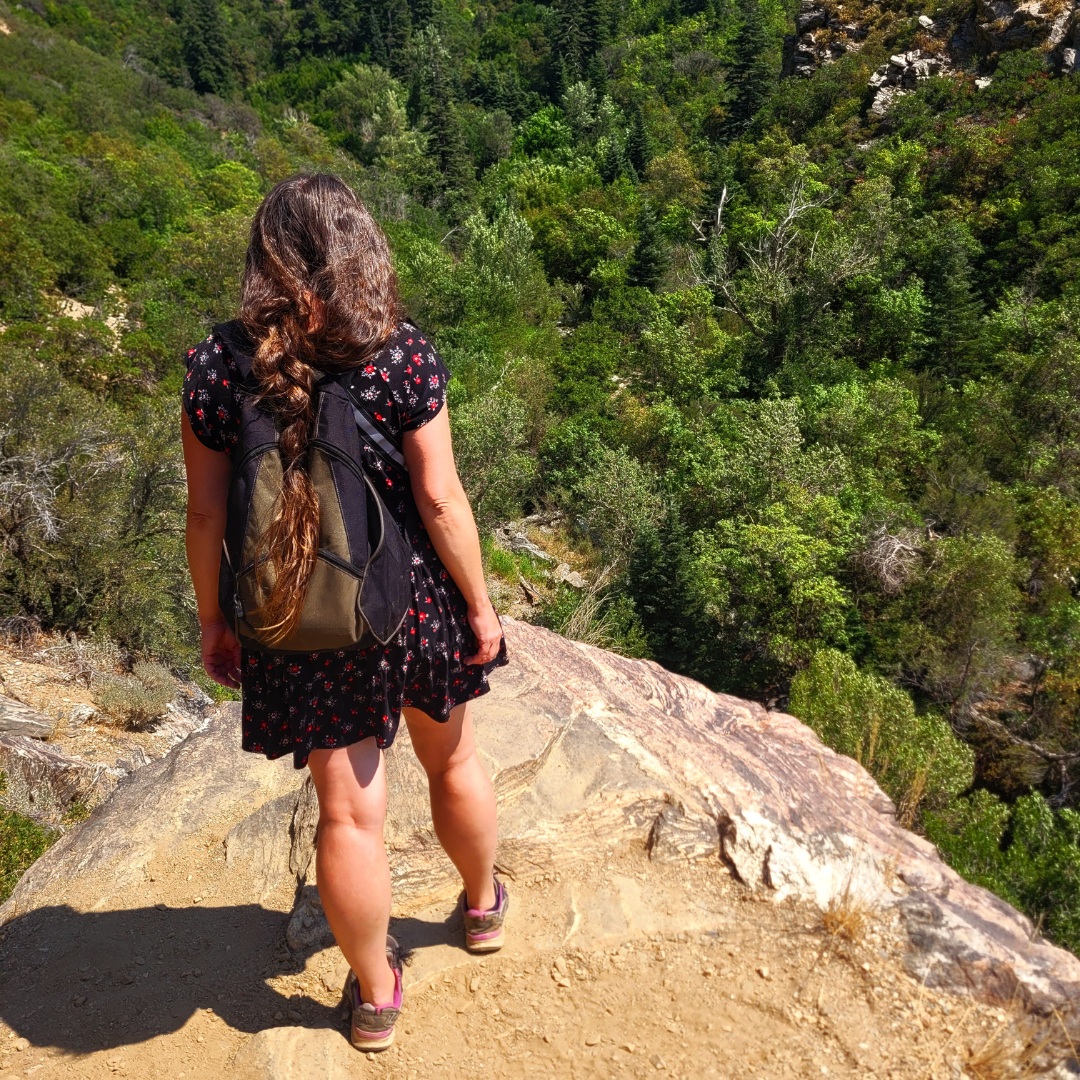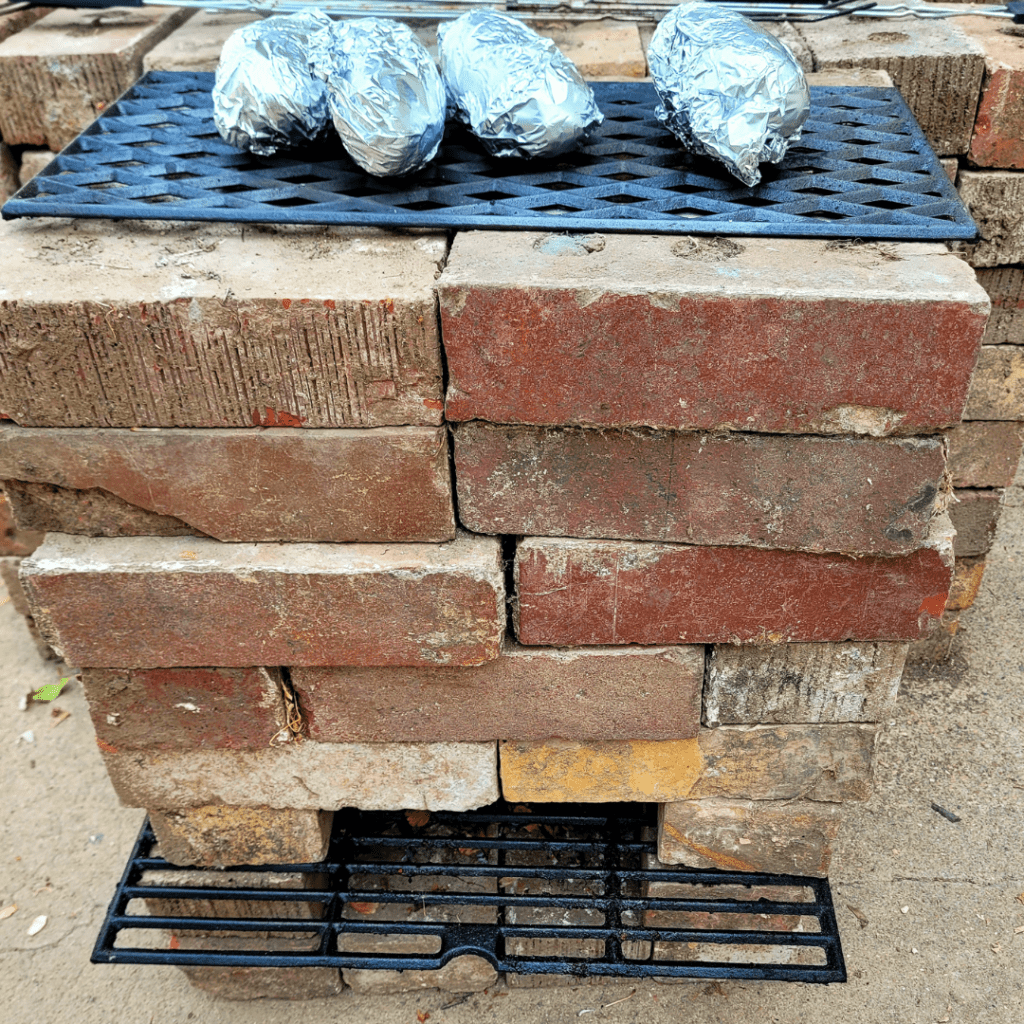Planning to hike the high desert? Learn essential survival tips you should never ignore—from staying hydrated to navigating harsh terrain—so you can explore safely and confidently.
Have you ever found yourself in the midst of a high desert hike, feeling lost and ill-prepared for the challenges that lie ahead? The unforgiving terrain, scorching heat, and potential wildlife encounters can quickly turn an enjoyable adventure into a harrowing ordeal. Well, dear fellow outdoor enthusiasts, this blog post is your ultimate survival guide, packed with essential tips to ensure you conquer the high desert like a seasoned pro!
Whether you’re a seasoned hiker or a novice just setting out on your first desert trek, get ready to soak up invaluable survival tips that could make all the difference out there. From essential gear to emergency preparedness, I’ve got you covered. Let’s get started and conquer the high desert together!
This is a pinnable post. Tap or hover over any image in this post to pin to your Pinterest Boards.
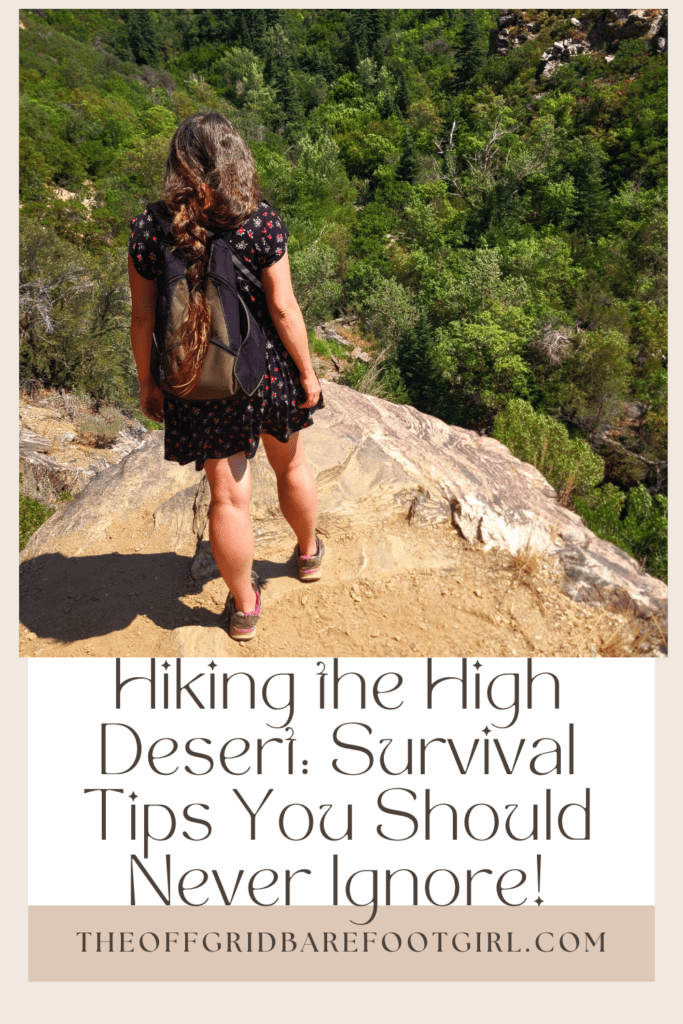
High Desert Hiking Dangers
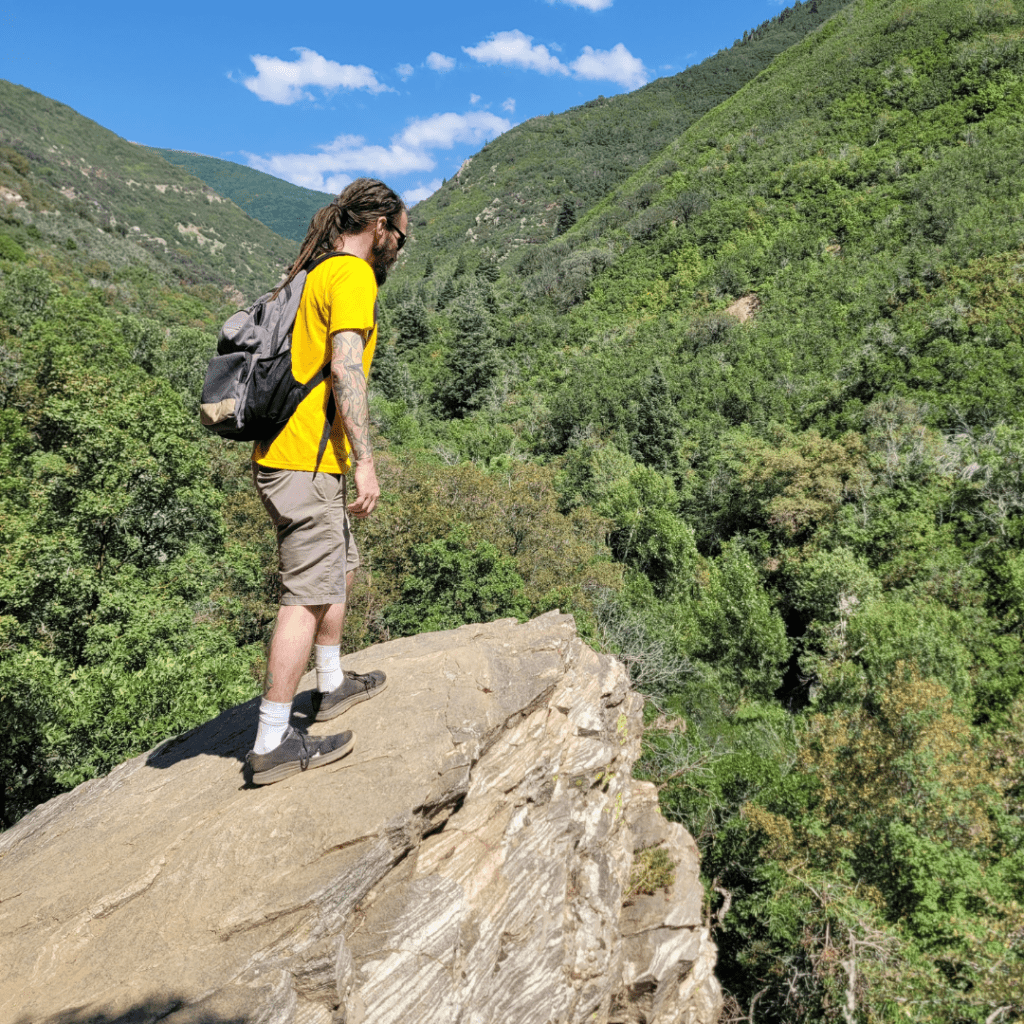
Imagine being stranded without water, your throat parched, and your energy dwindling with every step. Or worse, encountering a venomous reptile and having no idea how to react. These scenarios might seem like nightmares, but they’re real possibilities that every high desert hiker should be prepared for. That’s why I’ll cover water management strategies, navigating the rugged terrain, and dealing with extreme heat, among other crucial survival skills.
But don’t worry, I’m not just going to bombard you with dry facts and figures. Instead, I’ll share real-life anecdotes and insights from my experienced hikes in which I braved the high desert’s challenges firsthand. You’ll learn from my mistakes and successes, ensuring you’re equipped with the knowledge to handle any situation that arises during your next high desert adventure. We have been on over ten high desert hikes this year and I have learned a lot!
Plus, you can admire all of the gorgeous views I have seen along these high desert rugged paths that took my breath away! I only wished you had been there to witness the true beauty with your own eyes!
But hey, why not get out there and discover the beautiful wildlife for yourself? You will not be disappointed in the beauty of wildlife, but remember to take heed of these essential tips first!
Importance of Survival Tips in the High Desert
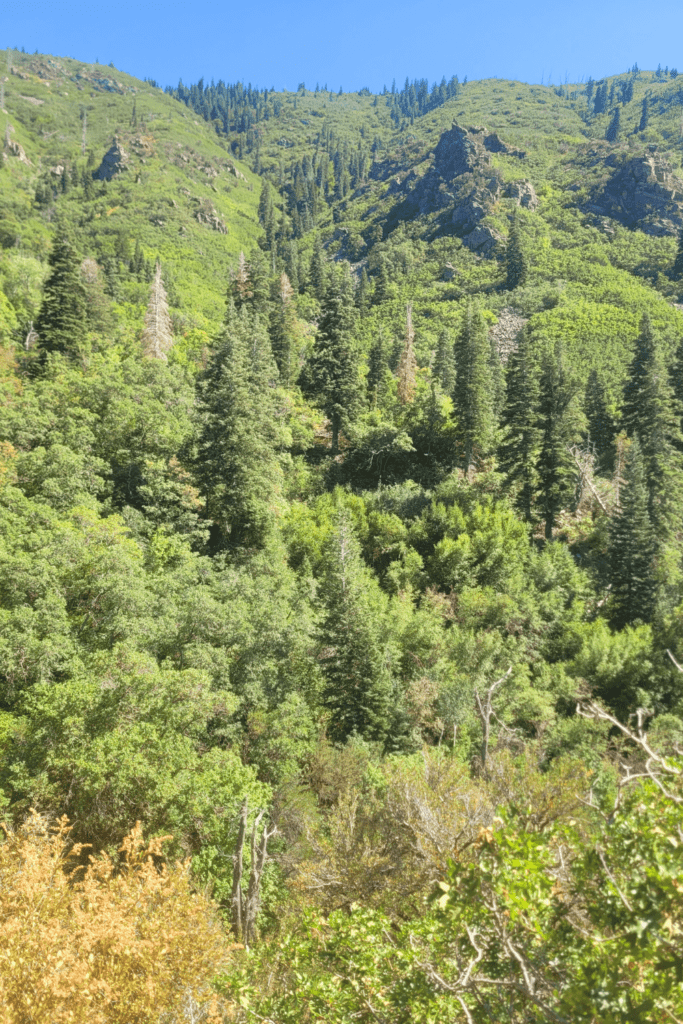
Setting out on a hiking adventure in the high desert can be an exhilarating experience, but it’s crucial to understand the unique challenges and potential dangers that come with this arid landscape. Preparedness is key to ensuring a safe and enjoyable journey.
Unique Challenges of the High Desert Environment
The high desert presents a harsh and unforgiving environment, characterized by extreme temperatures, high altitude, low humidity, and scarce water sources. Hikers must be prepared to cope with the intense heat during the day and frigid temperatures at night. Dehydration and heat-related illnesses are significant risks, making proper hydration and sun protection extremely essential.
Potential Dangers to Be Aware Of
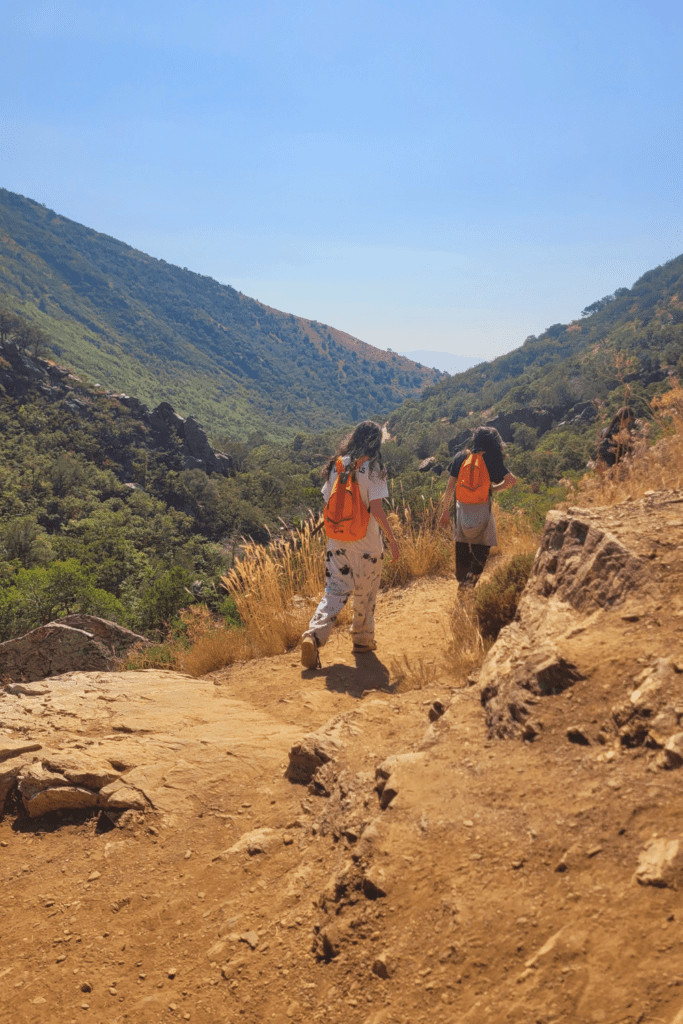
Navigating the high desert terrain can be treacherous, with rocky paths, steep inclines, and the risk of getting lost or stranded. Wildlife encounters, including venomous snakes and scorpions, are also a concern. My biggest fear on the trails is a dangerous encounter with a hungry mountain lion on the hunt!
Hikers should always be vigilant and take necessary precautions, such as carrying a map, compass, and first-aid kit. A survival knife, a whistle, and bear spray are always carried on my person whenever I am out on the trails, as well as everyone else in my group.
Why Preparedness is Crucial
Proper planning and preparedness can mean the difference between an unforgettable adventure and a potentially life-threatening situation. By familiarizing yourself with the unique challenges of the high desert and equipping yourself with the necessary survival skills and gear, you can mitigate risks and enjoy your hike with confidence.
Neglecting survival tips in the high desert can have severe consequences, so it’s crucial to take them seriously. By understanding the environment, being aware of potential dangers, and prioritizing preparedness, you can set out on your high desert hiking adventure with peace of mind.
Essential Gear for High Desert Hiking
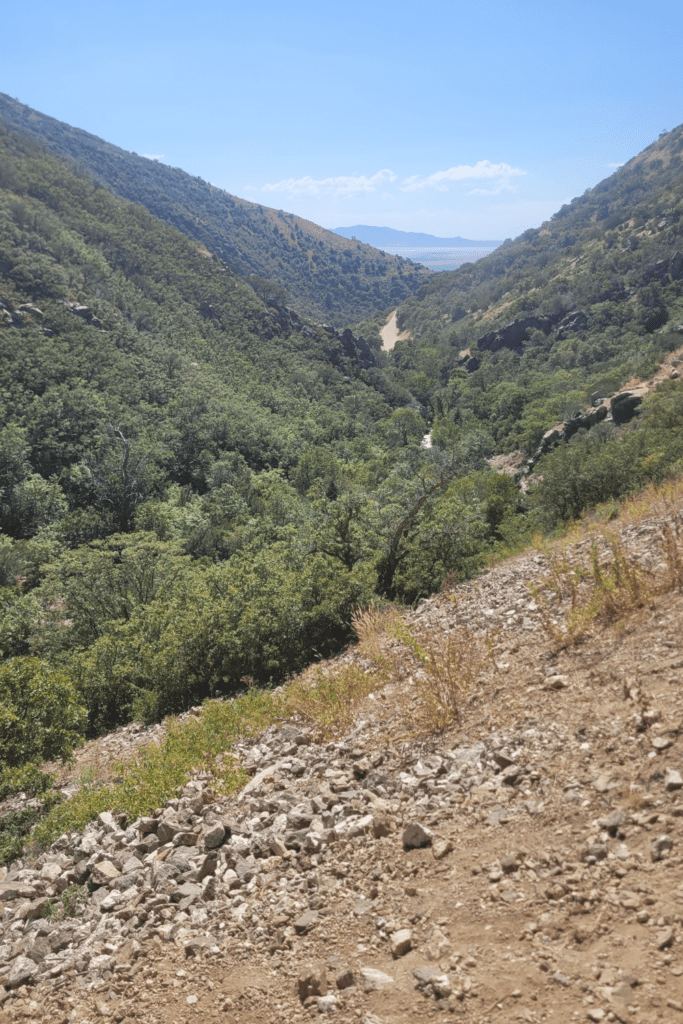
When stepping foot on a high desert hiking adventure, having the right gear can make all the difference in ensuring a safe and enjoyable experience. From protecting you from the elements to helping you navigate and stay hydrated, the essentials are non-negotiable.
Must-Have Hiking Gear
A good pair of hiking boots or shoes with ample traction and ankle support is crucial for navigating the rugged terrain. Lightweight, moisture-wicking clothing and a wide-brimmed hat will keep you comfortable and protected from the intense desert sun. Don’t forget a sturdy backpack to carry all your essentials, and consider trekking poles for added stability on uneven ground.
Top Must-Have Hiking Gear for Hiking the High Desert
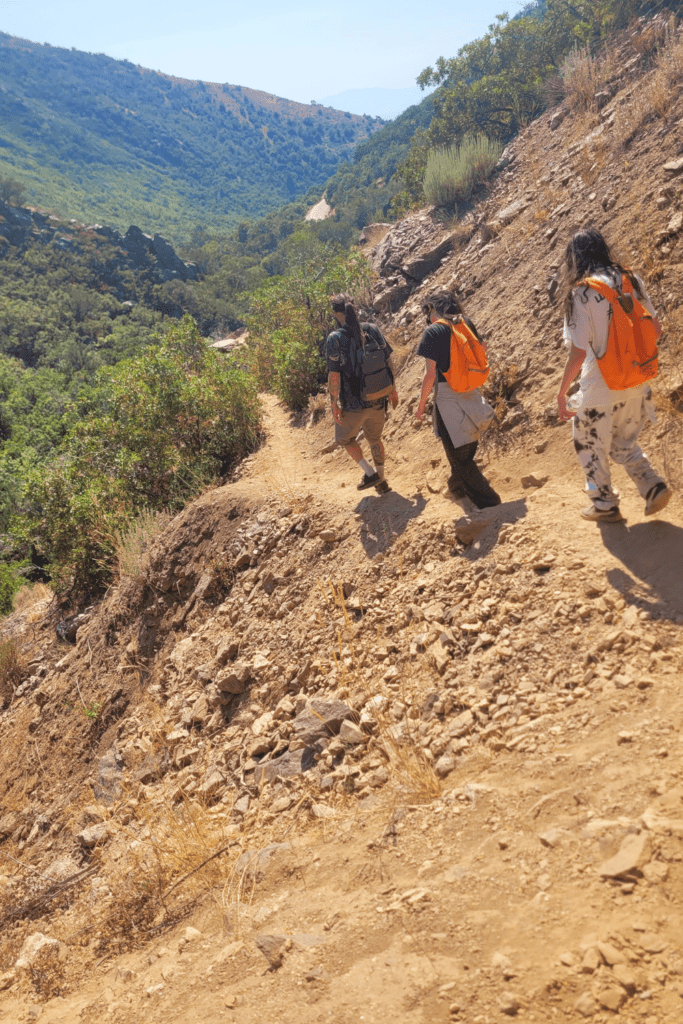
Here are some must-have hiking gear items for hiking in the high desert:
- Hydration System: Such as a hydration bladder or sturdy water bottle is essential for staying hydrated in a dry desert environment.
- Sun Protection: Including a wide-brimmed hat, sunglasses with UV protection, and sunscreen to shield yourself from intense desert sun.
- Sturdy Footwear: Hiking boots or trail shoes with good ankle support and traction, suitable for rocky terrain.
- Navigation Tools: A map of the area, a compass or GPS device, and knowledge of how to use them to navigate desert trails.
- Layered Clothing: Lightweight, moisture-wicking clothing that can be layered for temperature changes throughout the day and night.
- First Aid Kit: Including supplies for treating blisters, cuts, and other minor injuries, as well as any personal medications.
Don’t Forget These Too!
- Emergency Shelter: Such as a lightweight tent or emergency bivvy sack in case you get stranded or need shelter from the elements.
- Headlamp or Flashlight: With extra batteries, useful for hiking early mornings or late evenings and for emergencies.
- Multi-tool or Knife: For various tasks such as cutting bandages, repairing gear, or preparing food.
- Whistle and Signal Mirror: For signaling in emergencies, sound carries well in open desert spaces, and a mirror can be used to reflect sunlight for signaling. The provided link offers a military-grade whistle and mirror combo!
- Snacks and High-Energy Foods: Like nuts, dried fruits, and energy bars to maintain energy levels during long hikes.
- Personal Locator Beacon (PLB) or Satellite Messenger: Optional, but highly recommended for remote desert hikes to summon help in emergencies. Your life is worth it!
These items are crucial for safety and comfort when hiking in the high desert, where conditions can be harsh and remote.
Water and Hydration Essentials (Non Negotiable!)
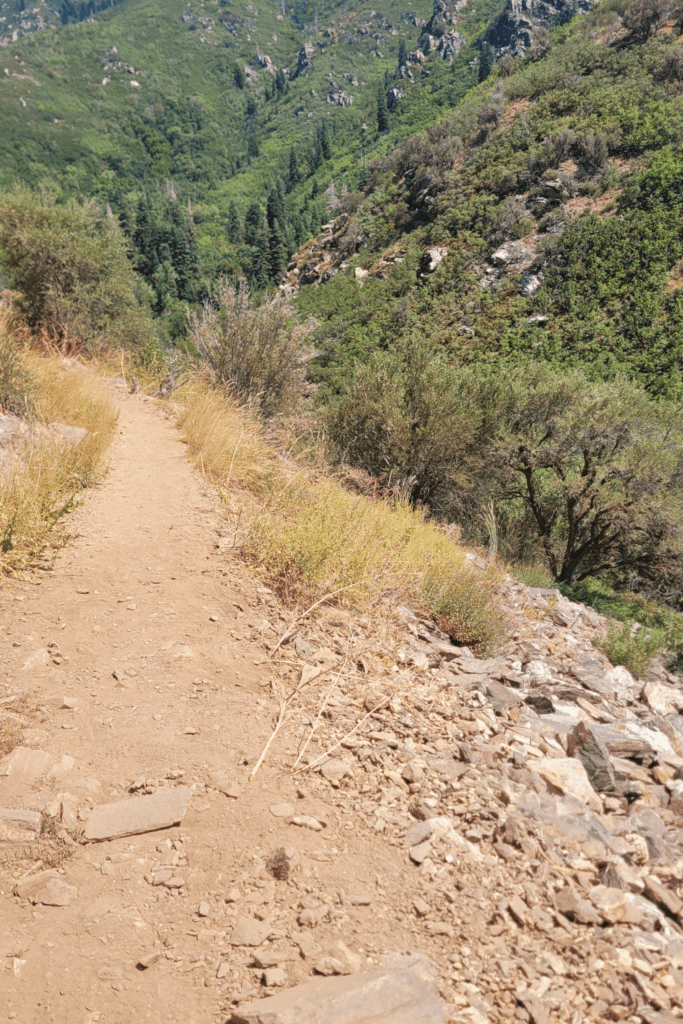
Hydration is key in the high desert, where temperatures can soar, and water sources are scarce. Pack more water than you think you’ll need, and consider a water filtration system or purification tablets to treat any found water sources. Electrolyte-replenishing drinks or snacks can also help combat dehydration and fatigue.
My teenage sons have been on overnight hiking explorations with a group of peers and they have learned to use water filtration systems in mountain streams and found it very cold and refreshing! You can find them in the following link!
LifeStraw Personal Water Filter for Hiking
Getting lost in the vast desert expanse can be life-threatening. Always carry a topographic map, compass, and a GPS device or smartphone with a navigational app. A whistle and a mirror can also aid in signaling for help if needed. Don’t forget to pack a fully charged power bank to keep your devices running.
Whether you’re a seasoned hiker or a desert novice, having the right gear can make all the difference in ensuring a safe and enjoyable high desert hiking experience. Preparation is key, so pack wisely and stay vigilant on the trail, no exceptions!
Mastering the Call of the Wild with Your Bare Hands!
An Effective Survival Technique for Hikers!
While we have whistles in our backpacks, we actually use our hands to blow a very loud horn noise that echoes through the canyon with different tunes so that we all know who is making that sound. My dad, a hunter, taught me how to do this when I was a kid, and I taught my sons how to do it too. My dad has his unique noise when he blows through his hands, and I immediately know that it is him calling out to us.
We make this noise with our hands whenever we are separate,d so we can follow and communicate with horn calls until we are all together again.
The fun part about making this noise with your hands is that you can communicate with the owls by being in tune with theirs. It is pretty neat, and I have communicated with the owls all of my life this way. I think everyone should be able to learn this survival skill and teach everyone in your group how to do it. It is a skill that takes practice to learn and master in order to make a really loud call with your own unique call.
Have a listen to how my call sounds, the sound I use for the owl,s and my dad’s unique call that we all know. I will perform all of them for you just to show you what I am talking about in this short video clip.
Water Management Strategies
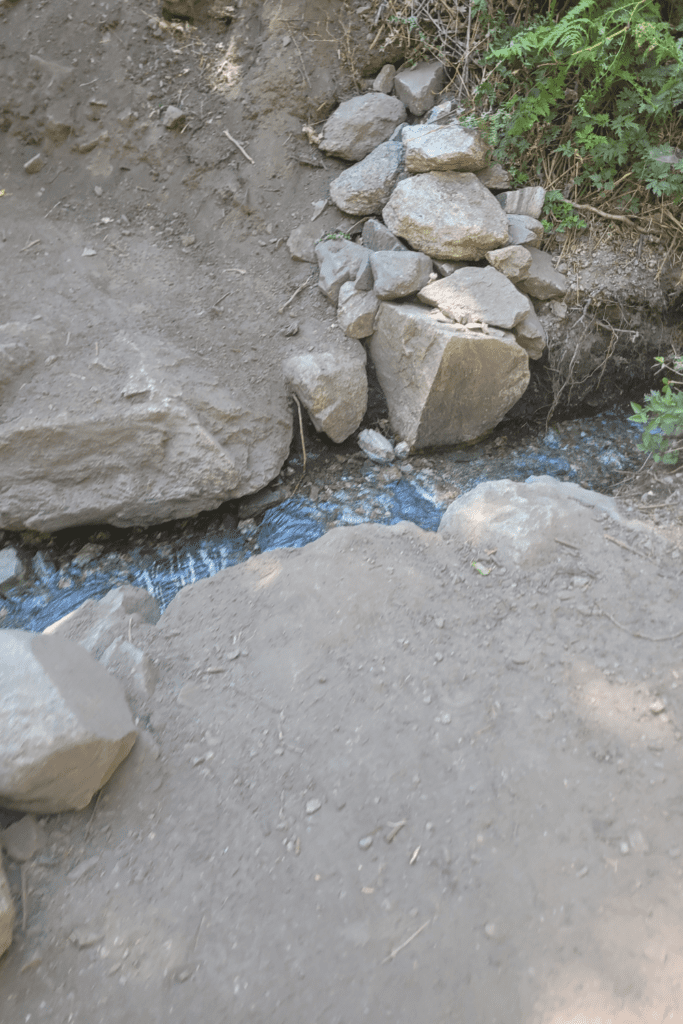
Water is a precious resource in the high desert, and proper management strategies are crucial for survival. In this harsh environment, dehydration can quickly become a life-threatening concern, making it essential to plan ahead and take proactive measures.
If you are well equipped with proper water filtration systems, always be ready to refill your water bottles once they are empty at any chance you can get and filter them!
Preparing for Limited Water Sources
Before setting out on your desert adventure, it’s vital to research the area and identify potential water sources along your route. Pack enough water to sustain you for the duration of your hike, plus an extra reserve for emergencies. Invest in a high-quality water filter or purification tablets to ensure you can safely drink from any available water sources you encounter. You can get your water purification tablets or powder packs at the following link.
Water Purifier Powder Packs for Hiking
Purifying and Treating Water in the Wild
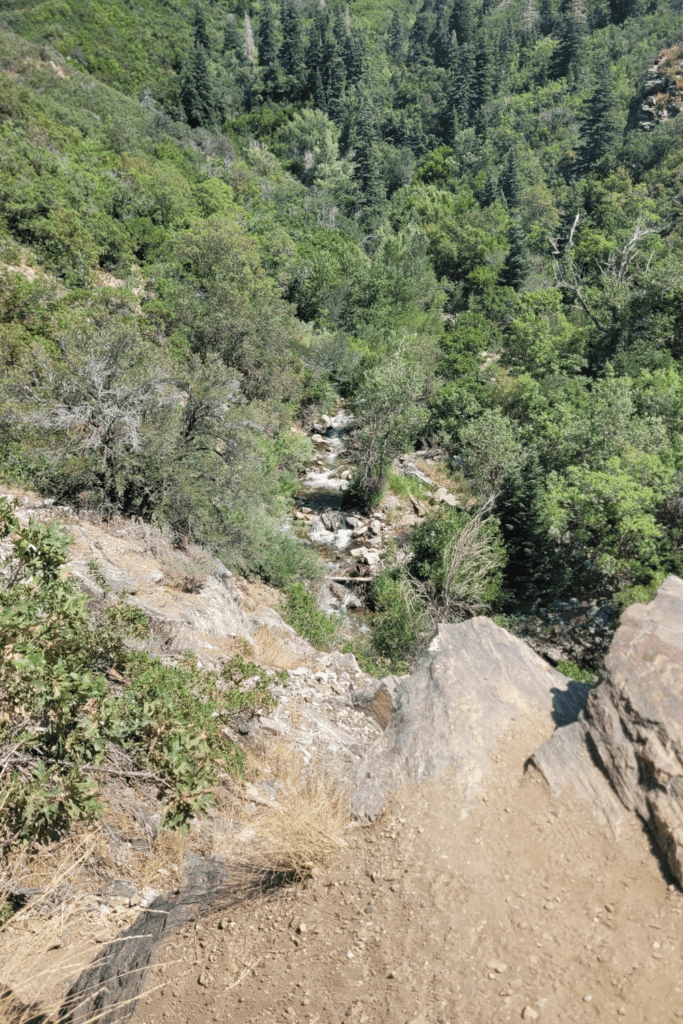
Even if you come across a stream or pond, it’s crucial to purify the water before drinking it. Untreated water can harbor harmful bacteria, viruses, and parasites that can cause severe illness. So don’t be fooled by how crystal clear the water may look!
Follow proper purification methods, such as boiling, using a water filter, or adding purification tablets. Always let the water cool before drinking after boiling, and consider adding electrolyte replacements to replenish lost minerals.
Signs of Dehydration and Prevention
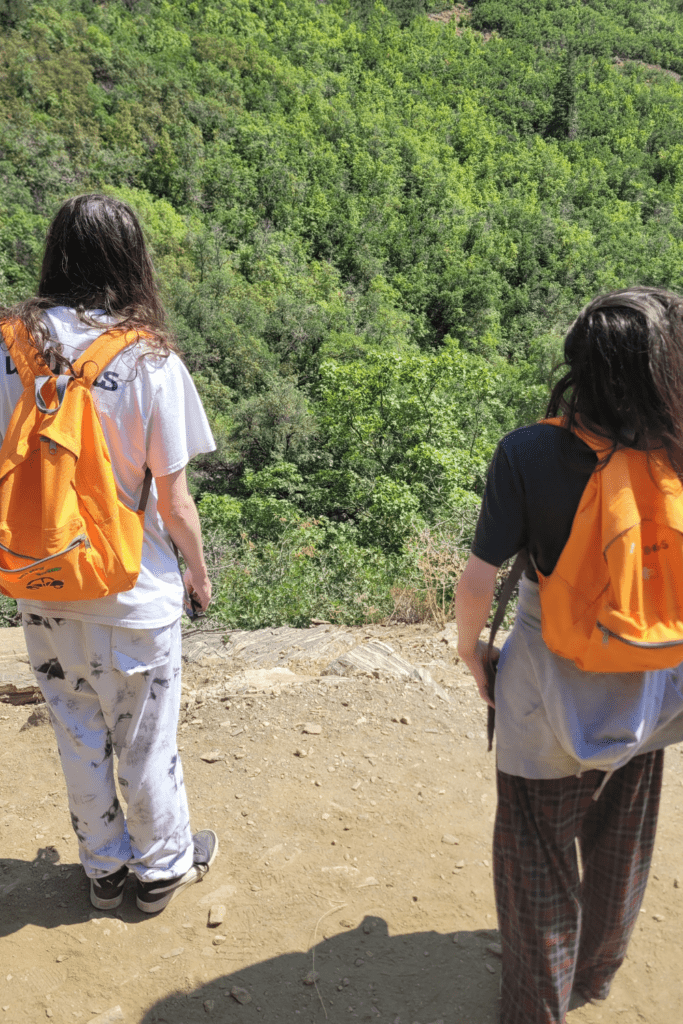
Recognizing the early signs of dehydration is crucial for your safety in the desert. Watch out for symptoms like dry mouth, headache, dizziness, and dark-colored urine. If you experience these, stop and rest in a shaded area, and drink water immediately. Prevent dehydration by staying hydrated throughout your hike, sipping water regularly, and avoiding excessive sweating by adjusting your pace and taking breaks as needed.
Remember, proper water management is a matter of life and death in the high desert. Plan ahead, purify your water sources, and listen to your body’s signals to ensure a safe and enjoyable hiking experience.
Dealing with Extreme Heat
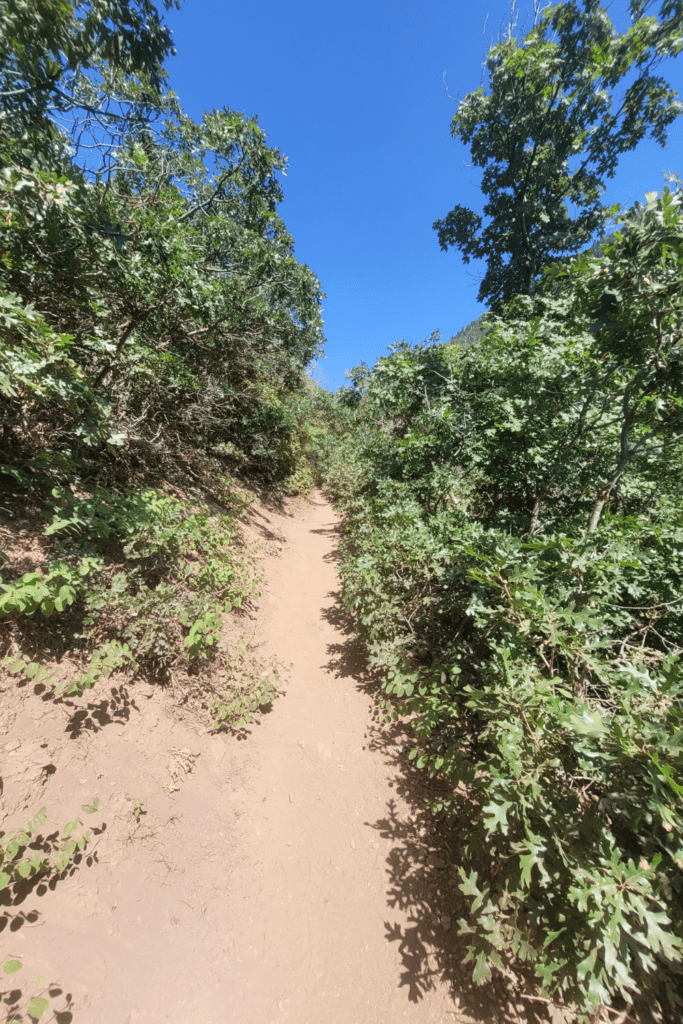
When hiking in the high desert, dealing with extreme heat is a critical survival challenge. The intense sun and soaring temperatures can quickly dehydrate and exhaust even the most experienced hikers. Here’s what you need to know to stay safe and beat the desert sun.
Beating the Desert Sun
The key to beating the desert heat is proper planning and preparation. Avoid hiking during the hottest hours of the day, typically between 10 AM and 4 PM. Instead, aim to hit the trails early in the morning or late afternoon when temperatures are more manageable. Additionally, be sure to factor in frequent rest breaks and seek out shaded areas along the trail.
Proper Clothing and Sun Protection
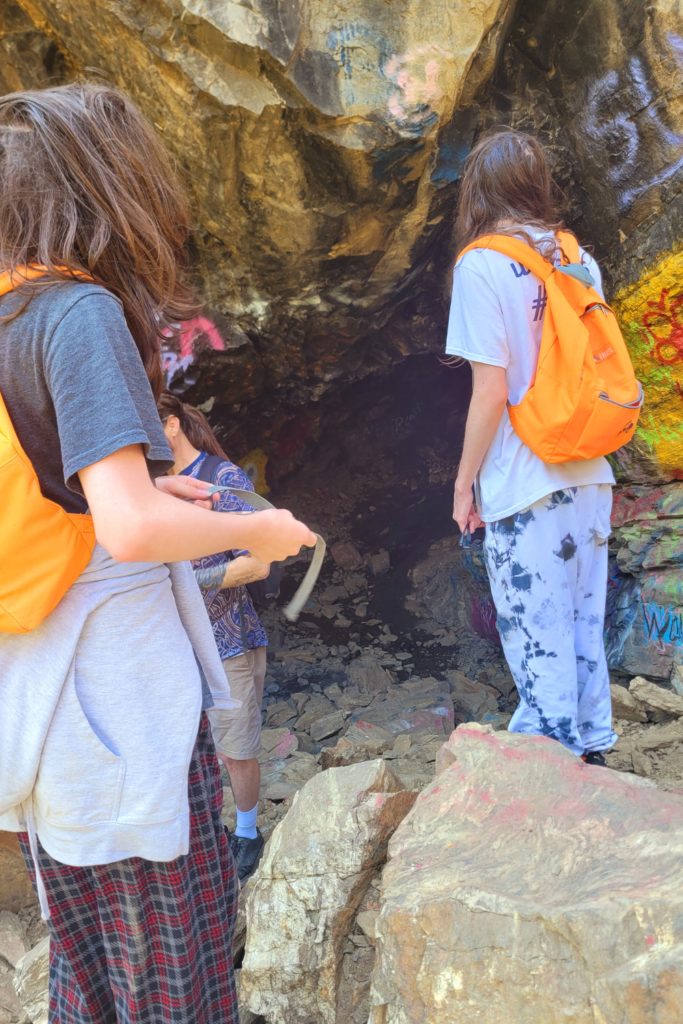
Choosing the right hiking attire can make a world of difference in protecting you from the relentless desert sun. Opt for lightweight, loose-fitting clothing that covers as much of your skin as possible. Light colors are preferable as they reflect heat better than darker shades. A wide-brimmed hat and sunglasses are essential for shielding your face and eyes from harmful UV rays.
Don’t forget to apply (and reapply) a broad-spectrum sunscreen with an SPF of at least 30. Sunburns can quickly lead to dehydration and other heat-related issues, so protecting your skin is crucial.
Warning Signs of Heat-Related Illnesses
Recognizing the early warning signs of heat-related illnesses can be lifesaving. Watch out for symptoms such as excessive sweating, dizziness, headaches, muscle cramps, nausea, and confusion. If you or someone in your group experiences these symptoms, stop hiking immediately, seek shade, and hydrate.
Heat exhaustion and heatstroke are serious conditions that require immediate medical attention. If left untreated, they can lead to organ failure and even death. Trust your instincts and don’t hesitate to call for emergency assistance if symptoms persist or worsen.
By understanding the risks of extreme heat and taking the necessary precautions, you can enjoy a safe and rewarding hiking experience in the high desert. Stay vigilant, hydrated, and prepared, and you’ll be well-equipped to tackle the challenges of this unforgiving yet beautiful environment.
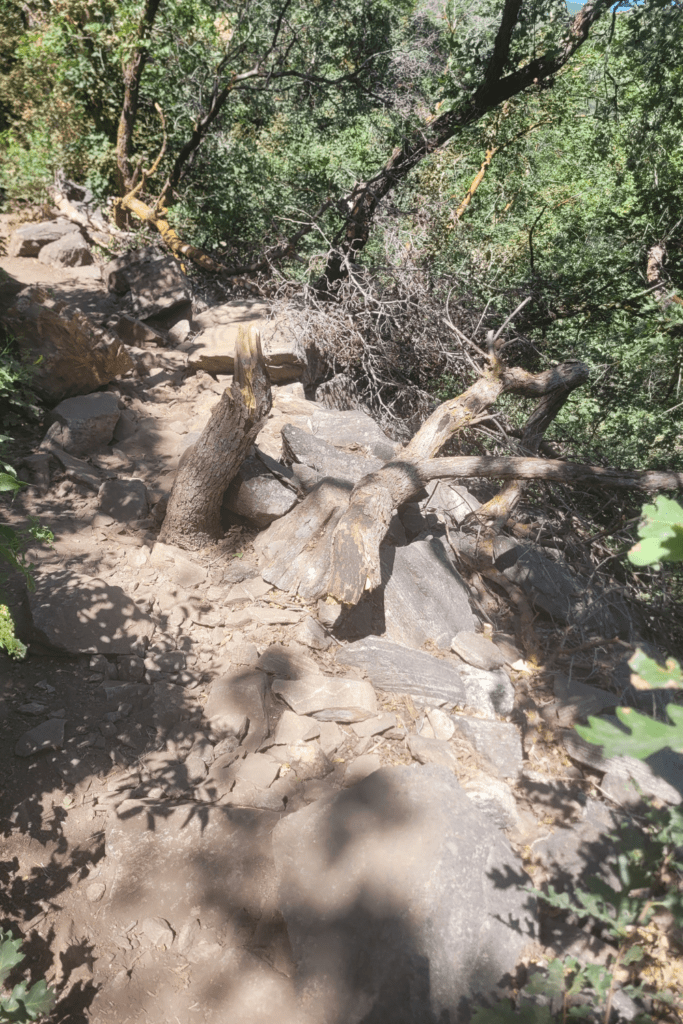
Venturing into the high desert can be an exhilarating experience, but it’s crucial to understand how to navigate the terrain safely. Getting lost or stranded in this unforgiving environment can quickly turn into a dangerous situation. Here’s what you need to know to stay on track and avoid potential mishaps.
Reading Maps and Using GPS
Mastering map reading and utilizing a GPS device are essential skills for any desert hiker. Before your trek, study the topographic maps of the area and familiarize yourself with key features like trails, landmarks, and elevation changes. Additionally, ensure your GPS is fully charged and loaded with the necessary maps. While technology can be a valuable tool, it’s wise to have a backup plan and know how to navigate without it.
Recognizing Landmarks and Trail Markers
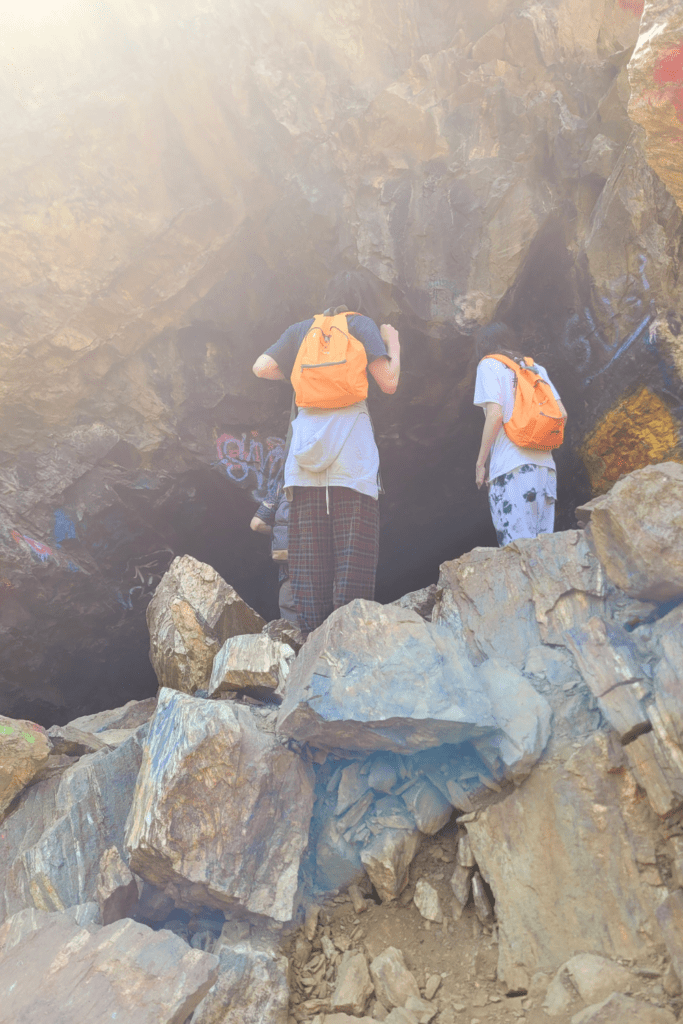
In the vast expanse of the desert, landmarks and trail markers can be your guiding beacons. Keep a keen eye out for cairns (small stacks of rocks), blazes on trees or rocks, and other markers that indicate the trail. Prominent natural features like distinctive rock formations, peaks, or dry riverbeds can also help you orient yourself and stay on course.
Avoiding Getting Lost or Stranded
Even the most experienced hikers can find themselves off-trail in the desert. To avoid getting lost or stranded, always inform someone of your hiking plans, including your intended route and expected return time. Stick to established trails whenever possible, and if you do stray, backtrack to your last known location. Carry essential survival gear, such as a whistle, mirror, and emergency blanket, in case you need to signal for help.
Remember, navigating the high desert requires preparation, vigilance, and respect for the environment. By mastering these skills and following safety protocols, you’ll be better equipped to enjoy the unique beauty of this rugged landscape while minimizing the risks associated with getting lost or stranded.
Encountering Wildlife
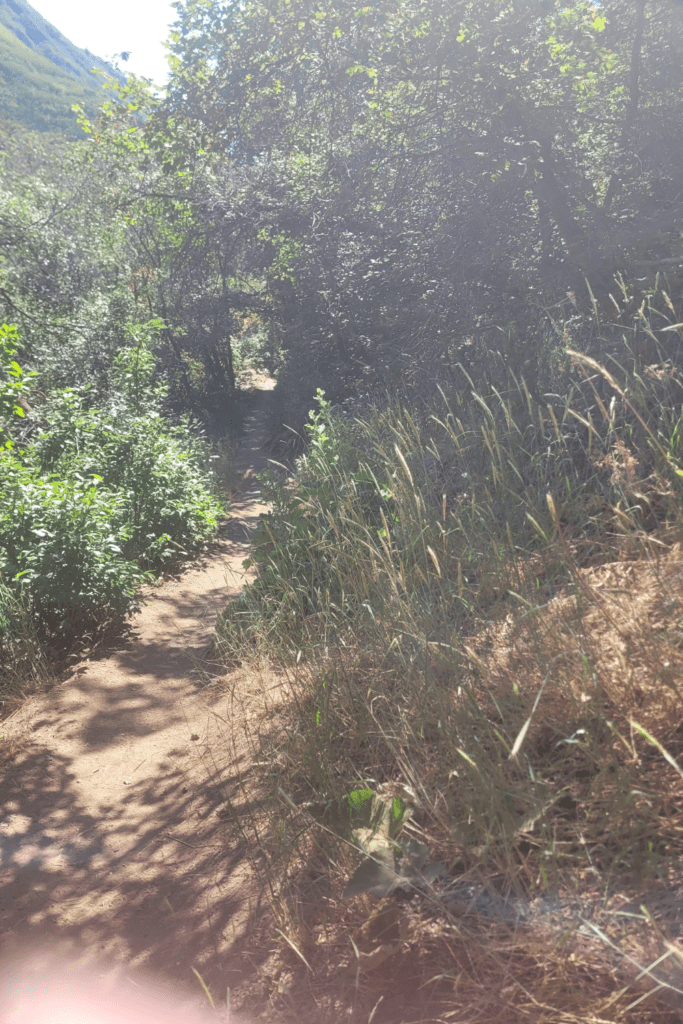
While hiking in the high desert, encountering wildlife is a possibility that you should be prepared for. Understanding the behavior of common desert animals and taking necessary precautions can help ensure a safe and enjoyable experience.
Common Desert Animals and Their Behavior
The desert is home to a diverse range of animals, including coyotes, rattlesnakes, tarantulas, and scorpions. It’s essential to be aware of their behaviors and habits to avoid unexpected encounters. For instance, coyotes are generally timid around humans, but may become aggressive if they feel threatened or if there is food around them.
Staying Safe Around Venomous Creatures
Venomous creatures like rattlesnakes and scorpions can pose a significant risk if encountered. Always watch your step, especially when hiking in rocky or brushy areas. If you encounter a venomous animal, remain calm and back away slowly without making sudden movements that could provoke an attack.
Staying Safe Around Wildlife Guide
Here’s a guide on how to stay safe around common desert animals and understand their behavior while hiking in the high desert:
- Snakes (Rattlesnakes):
- Behavior: Rattlesnakes are typically active during warmer months and sun themselves on rocks or trails. They can be found coiled in shaded areas or under rocks.
- Safety Tips:
- Watch Your Step: Stay on trails and avoid stepping over logs or rocks without first checking them.
- Listen for Rattles: Rattlesnakes will often warn before striking, so listen for their distinctive rattle noise.
- Give Space: If you encounter a snake, back away slowly and give it plenty of room to retreat.
- Scorpions:
- Behavior: Nocturnal creatures that hide during the day in cool, dark places such as under rocks or logs.
- Safety Tips:
- Shake Out Gear: Before putting on gloves, shoes, or clothing left on the ground, shake them out to dislodge any hidden scorpions.
- Use a Light: Always use a flashlight when moving around at night to spot scorpions before accidentally disturbing them.
- Keep Gear Sealed: Seal your gear in containers or bags to prevent scorpions from crawling inside.
- Coyotes:
- Behavior: Generally shy and avoid humans, but can become aggressive, especially if they feel threatened or are habituated to human presence.
- Safety Tips:
- Maintain Distance: Do not approach or attempt to feed coyotes. Keep pets on a leash.
- Make Noise: If approached, make yourself appear larger, shout, and throw objects toward the coyote without turning your back.
- Protect Pets: Coyotes may view small pets as prey. Keep them close and do not let them roam freely.
Don’t Forget About These Too!
- Desert Insects (such as Bees and Ants):
- Behavior: Bees may nest in the ground or in vegetation, and ants can create large colonies that are easily disturbed.
- Safety Tips:
- Watch Where You Step: Be cautious when walking through dense vegetation or near the bases of trees where bees may nest. Trust me on this one! They come out of holes in the ground, and it is scary!
- Avoid Disturbing Nests: Stay away from visible ant hills or disturbed ground, as these may house aggressive ant colonies.
- Carry Antihistamines: If allergic to bee stings, carry appropriate medication and know how to use it.
- Birds of Prey (such as Eagles and Hawks):
- Behavior: Protect their nests and may dive defensively if they perceive a threat to their young or territory.
- Safety Tips:
- Stay Away from Nests: Avoid areas where birds of prey are actively nesting or feeding their young.
- Wear a Hat: If birds are actively swooping, wearing a hat can provide some protection.
- Move Away Slowly: If you find yourself in a dive path, slowly and calmly move away from the area without waving your arms or acting aggressively.
- Big Horn Sheep and Other Large Mammals:
- Behavior: Generally avoid humans, but can be aggressive if they feel threatened, especially during mating season or when protecting young.
- Safety Tips:
- Observe from a Distance: Use binoculars to observe wildlife without approaching closely.
- Avoid Getting Between: If you encounter large mammals, do not get between them and their young or their escape route.
- Back Away Slowly: If approached, back away slowly while avoiding direct eye contact.
By understanding these behaviors and following safety tips, you can minimize risks and enjoy a safer hiking experience in the high desert.
Minimizing Encounters and Conflicts
To minimize the chances of encountering wildlife, follow these tips:
- Stay on designated trails and avoid wandering off.
- Keep your food securely stored and avoid leaving crumbs or litter that could attract animals.
- Make noise while hiking to alert animals of your presence and give them a chance to move away.
- Never approach or feed wild animals, as this can lead to aggressive behavior.
Remember, you are a visitor in their natural habitat. By respecting wildlife and following proper precautions, you can enjoy the beauty of the high desert while ensuring the safety of both yourself and the animals.
Emergency Preparedness
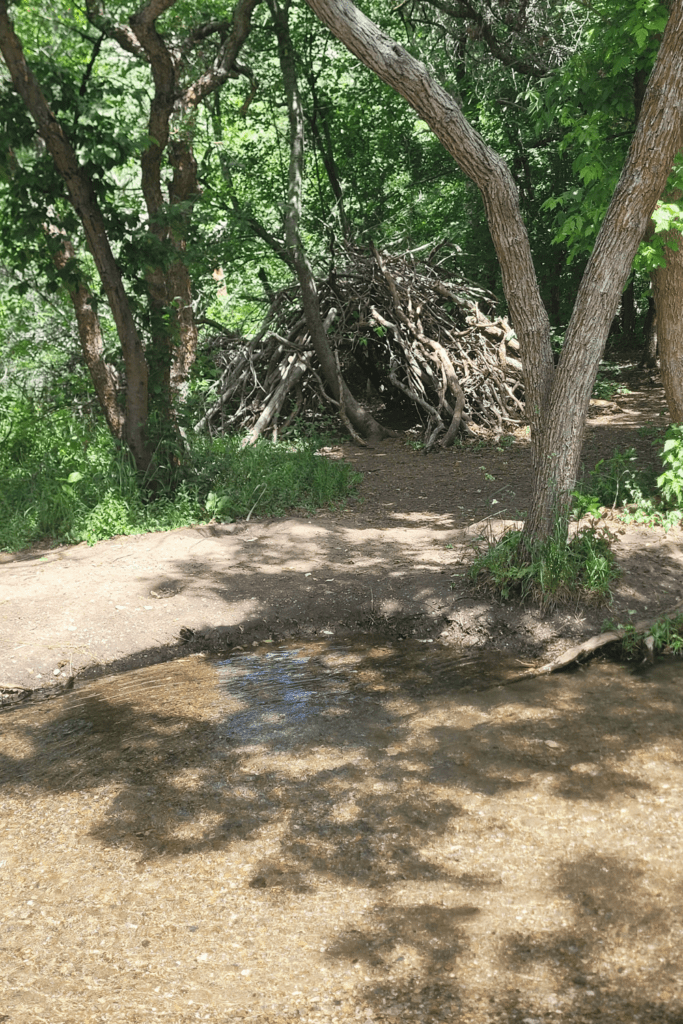
When hiking in the high desert, emergency preparedness is crucial for your safety and survival. Unexpected situations can arise quickly, and being proactive can make all the difference. Here’s what you need to know:
Building a Survival Kit
A well-stocked survival kit should be a non-negotiable part of your desert hiking gear. It should include essentials like a first aid kit, fire-starting tools, a multi-tool, an emergency blanket, and enough food and water to sustain you until help arrives. Tailor your kit to the specific conditions and duration of your hike.
I have already talked a ton about building a survival or bug-out bag that should also be used for hiking the high desert. I have also discussed great survival training courses you should take if you plan to be an avid outdoor adventurer. You can read the articles I have written in the following links to help better prepare yourself for hiking and surviving the high desert.
- SHTF Planning: How to Survive the High Desert Bootcamp!
- Into the Woods Survival Training: Unleash Your Warrior Spirit!
- The Hottest Survivalist Gear for True Survivors: Survival of the Fittest!
- Survival Skills Training: Into the Backwoods with a Master Survivalist!
- Choosing the Best Survival Cooking Kit: The Ultimate Guide
- Bugout Bags and Survival Training Course with Grid Down Consulting!
- Get These Vital Emergency Survival Equipment Now!
- Understanding Water Purification Methods for Survival: Best Practices Explained.
- Embrace Your Inner Survivor: Master These Crucial Wilderness Survival Skills!
- What Should Be in A 72-Hour Survival Kit?
- How to Build a No-Fail Fire Starter Survival Kit
Basic First Aid and Injury Response
Familiarize yourself with basic first-aid techniques for treating common injuries like blisters, sprains, and dehydration. Learn how to properly clean and dress wounds, immobilize fractures, and recognize the signs of heat-related illnesses. A wilderness first aid course can equip you with invaluable skills.
When and How to Signal for Help
If you find yourself in an emergency situation, know when and how to signal for help. Carry a whistle, mirror, or emergency beacon to attract attention. Learn how to build signaling fires or create ground-to-air signals visible from above. Being prepared to communicate your distress can significantly increase your chances of being rescued.
In the harsh desert environment, being proactive about emergency preparedness can be a lifesaver. Take the time to build a comprehensive survival kit, learn essential first aid skills, and understand how to signal for help effectively. With the right knowledge and gear, you’ll be better equipped to handle whatever challenges the high desert throws your way.
Conclusion
The high desert may seem unforgiving at first glance, but with proper preparation and knowledge, you can conquer its challenges and uncover its raw beauty. Remember to pack the essentials, manage your water intake wisely, and stay vigilant against the elements.
Navigating the terrain and encountering wildlife requires caution, but don’t let that discourage you from exploring this captivating landscape. Always have an emergency plan in place, but more importantly, embrace the adventure and create lasting memories.
The high desert has so much to offer for those willing to respect its harsh realities while reveling in its natural wonders. Why not share your own desert hiking experiences or survival tips with fellow adventurers? The journey continues, and with the right mindset, you’ll emerge from the desert enlightened and inspired!
Hiking the high desert is easier when you understand how to live off the land—learn more in How to Live on Raw Land.
Whether navigating harsh terrain or planning for unexpected emergencies, having a full preparedness plan is key—learn how to cover all your bases in The Complete Guide to Emergency Preparedness: Everything You Need to Thrive in Any Situation.
Resources: Here are some helpful resources for further information.
- Five Must-Hike Trails In the High Desert – By Victorville Daily Press
- Hiking the High Desert: Backpacking In Canyonlands – By Sintax77
- Hiking In Utah’s Desert: Discovering Subtle Beauty – By Backroads
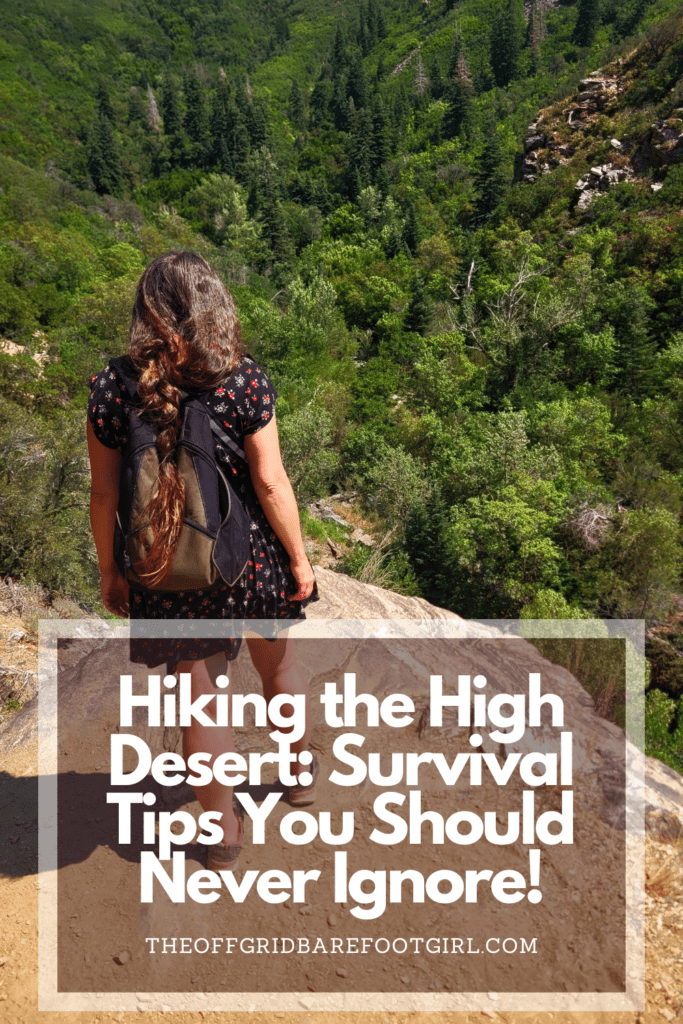
Frequently Asked Questions
1. What are the essential survival tips for hiking in the high desert?
Key survival tips include staying hydrated, navigating with maps or GPS, protecting yourself from extreme heat and sun exposure, and knowing how to react to encounters with wildlife like snakes and scorpions.
2. How can I stay safe from desert wildlife while hiking?
Stay alert and watch your steps to avoid snakes and scorpions. Keep a safe distance from wildlife like coyotes and birds of prey, and be prepared with appropriate gear and knowledge.
3. What should I pack for a hike in the high desert?
Essential items include plenty of water, sun protection (hat, sunscreen), sturdy footwear, navigation tools, a first aid kit, and emergency supplies like a whistle and flashlight.
4. What should I do if I get lost or injured in the high desert?
Stay calm, assess your surroundings, and use your navigation tools to try to find your way back to a marked trail or safety. Signal for help with a whistle or mirror, and if injured, prioritize first aid and communication with emergency services.
Summary
I hope I have inspired you to help you prepare your survival skills with these helpful tips and products. Here are some other links you may be interested in reading!
SHTF Planning: How to Survive the High Desert Bootcamp!
Survival Skills Training: Into the Backwoods with a Master Survivalist!
Choosing the Best Survival Cooking Kit: The Ultimate Guide
Survive the Peaks: The Best Avalanche Gear on the Market!
Bug In and Survive a Grid Down: Survival Training Course!
Bugout Bags and Survival Training Course with Grid Down Consulting!
Get These Vital Emergency Survival Equipment Now!
Bartering: How To Negotiate Commodities with Astonishing Results!
Warning: Why You Need Whole Home Water Purification Now!
How to Design Off Grid Power Systems for Your Homestead
How Many Watts Does a Fridge Use? Energy Efficient Guide
The Best States for Off Grid Living: Unplugged and Thriving
Composting Toilet Systems Are Surging: Ditch Your Septic Tank Now!
Are Greywater Tanks the Key to Sustainable Living? Find Out Now!
How to Live Off-Grid: 11 Tips to Survive and Thrive!
Are Survival Food Kits Worth It? The Truth Revealed!
Do You Really Need Faraday Bags? The Shocking Truth Revealed!
The Best Doomsday Preppers Blogs to Follow Now Before SHTF!
The Ultimate Camping Gear Checklist: Everything You Need for an Adventure
The Ultimate Spring Cleaning House Checklist: Deep Clean with Me!
How Supporting Farmer’s Markets Makes a Difference
Eco-Friendly Christmas: How to Have an Eco-Friendly Christmas
How to Winterize Your Home: Prepare for Jack Frost’s Wrath!
Proven Hacks to Make Your Christmas Tree Survive
What Thanksgiving Teaches Us About Survival
Homeless Survival Hacks to Overcome Adversity
More Self-Sufficiency Posts!
Is Your Car Ready for Winter? The Ultimate Checklist for Your Winter Emergency Car Kit
What The Walking Dead Can Teach Us About Survival: The Walking Dead Survival Tactics
Get Lockdown Ready: Best Dollar Tree Survival Items
Understanding Water Purification Methods for Survival: Best Practices Explained
Thirsty for Survival: Expert Guide to Emergency Water Prep Tactics
The Benefits of Urban Homesteading: Revolutionize Your City Life
Practical Pantry Prepper: Essential Guide
How to Grocery Shop Once a Month
What Should Be in A 72-Hour Survival Kit?
Buy or Die: Prepper Items You Need Now
How to Learn 58 Self-Sufficient Skills Right Now
Road to Self-Sufficiency: How to Start Your Journey
If you were encouraged by this post, I invite you to check out my FREE Printables Page for fun free printables, planners, and charts.
ENTER MY FREE Printables Page HERE
Blessings,
The Off Grid Barefoot Girl

